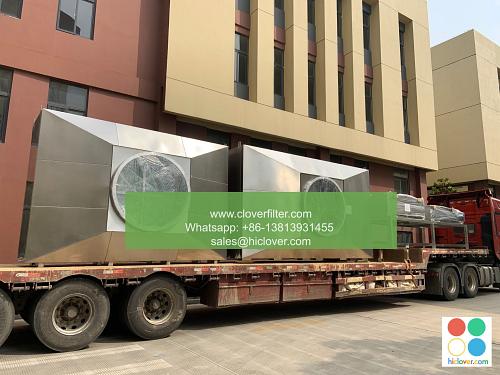Air Filter Design: The Importance of Filter Surface Area

The design of air filters is a critical aspect of maintaining good indoor air quality, and one of the key factors that determine their effectiveness is the filter surface area. In this article, we will explore the importance of filter surface area in air filter design and its impact on various application areas, including HEPA filtration, air purification systems, and industrial air filtration.
What is Filter Surface Area?
Filter surface area refers to the total area of the filter media that is exposed to the air stream. It is typically measured in square feet or square meters and is a critical parameter in determining the filter’s ability to capture particulate matter, gases, and odors. A larger filter surface area allows for more efficient air filtration and gas adsorption, making it an essential consideration in air filter design.
Importance of Filter Surface Area
The importance of filter surface area cannot be overstated. A larger filter surface area provides several benefits, including:
* Improved filtration efficiency: A larger filter surface area allows for more effective capture of particulate matter, bacteria, and viruses.
* Increased airflow: A larger filter surface area enables higher airflow rates, making it ideal for applications where high airflow rates are required.
* Reduced pressure drop: A larger filter surface area reduces the pressure drop across the filter, resulting in lower energy consumption and operating costs.
Application Areas
The importance of filter surface area is evident in various application areas, including:
* HEPA filtration: High-Efficiency Particulate Air (HEPA) filters require a large filter surface area to capture 99.97% of particulate matter as small as 0.3 microns.
* Air purification systems: Air purification systems, such as those used in hospitals and cleanrooms, require large filter surface areas to remove gases, odors, and particulate matter.
* Industrial air filtration: Industrial air filtration systems, such as those used in manufacturing facilities and power plants, require large filter surface areas to remove particulate matter, gases, and odors from the air.
Design Considerations
When designing air filters, several factors must be considered to ensure optimal filter surface area, including:
* Filter media: The type and quality of filter media used can significantly impact the filter surface area.
* Filter configuration: The configuration of the filter, including the number of filters and their arrangement, can affect the filter surface area.
* Airflow rates: The airflow rates required for the application can impact the filter surface area needed.
Conclusion
In conclusion, filter surface area is a critical factor in air filter design, and its importance cannot be overstated. A larger filter surface area provides several benefits, including improved filtration efficiency, increased airflow, and reduced pressure drop. By considering the importance of filter surface area and designing air filters with optimal filter surface area, we can improve indoor air quality and reduce the risk of airborne diseases in various application areas, including HEPA filtration, air purification systems, and industrial air filtration. It seems like you started to give a prompt, but it got cut off. Could you please provide the complete prompt or tell me how I can assist you today?

